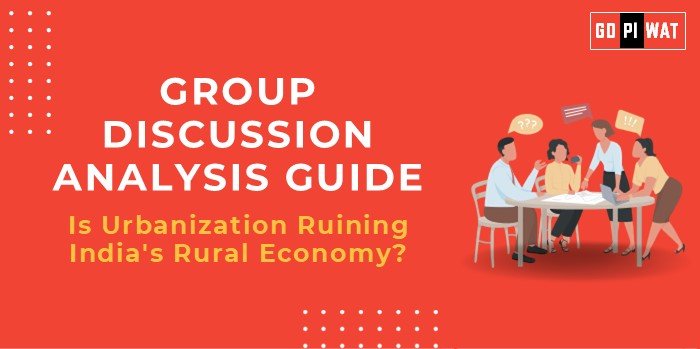📋 Is Urbanization Ruining India’s Rural Economy?
🌐 Introduction to Urbanization’s Impact on India’s Rural Economy
Opening Context: India’s rapid urbanization, driven by economic development, has significant implications for its rural economy. As cities expand, rural areas often face labor migration, shifts in land use, and reduced agricultural output, raising critical questions about long-term impacts on rural livelihoods and local economies.
Topic Background: Historically, India has been a primarily agrarian economy. However, with urban growth fueled by industrialization and technological advancements, rural economies are increasingly overshadowed. The focus has now shifted to understanding whether urbanization is providing sustainable growth or hollowing out the rural sector by drawing away essential resources and labor.
📊 Quick Facts and Key Statistics
- 🌍 Urban Population Growth: India’s urban population is expected to reach 600 million by 2030.
- 🌾 Agricultural Employment Decline: Rural workforce engaged in agriculture dropped from 57% (2004-05) to 41% (2021).
- 📈 Rural-to-Urban Migration: India’s migration rate has grown by approximately 4% annually in the past decade, affecting rural labor supply.
- 📉 Rural Contribution to GDP: While over 60% of India’s population lives in rural areas, rural contributions to GDP have decreased to below 20%.
👥 Stakeholders and Their Roles
- 🏛️ Government: Develops policies for balanced growth and rural development programs, including subsidies and incentives for agriculture.
- 🏢 Private Sector: Invests in urban-centric industries, often leading to urban-biased economic policies.
- 👨🌾 Rural Communities: Directly impacted by urbanization, with shifts in labor, lifestyle, and economic stability.
- 📢 NGOs and International Organizations: Support sustainable rural development, promote inclusive policies, and address migration-related challenges.
🏆 Achievements and Challenges
✨ Achievements:
- ✅ Increased Economic Opportunities: Urbanization has increased job opportunities, particularly in manufacturing and services.
- ✅ Infrastructure Development: Enhanced connectivity between rural and urban areas supports market access for rural products.
- ✅ Improved Standard of Living: Urbanization drives improved healthcare, education, and technology access for rural migrants.
⚠️ Challenges:
- 🚫 Labor Migration Impact: Rural areas lose skilled and semi-skilled labor to urban centers, affecting agricultural productivity.
- 📉 Resource Allocation: Rural areas receive fewer resources and infrastructure investments compared to urban areas.
🌍 Global Comparisons:
- 📍 China: Managed urbanization with controlled migration and special economic zones to balance rural and urban growth.
📖 Case Studies:
- 📍 Punjab: States like Punjab, which rely on agriculture, face labor shortages due to rural-to-urban migration.
💡 Structured Arguments for Discussion
- Supporting Stance: “Urbanization is beneficial as it drives economic growth and provides alternative livelihoods for rural populations.”
- Opposing Stance: “Urbanization is damaging India’s rural economy, leading to labor shortages, reduced agricultural productivity, and economic instability in rural areas.”
- Balanced Perspective: “Urbanization offers economic opportunities, but it requires policies that balance rural and urban development to mitigate negative effects on the rural economy.”
📋 Effective Discussion Approaches
- 📊 Opening Approaches:
- Fact-Based: “India’s rural workforce engaged in agriculture has declined by over 15% in the past two decades, challenging traditional rural economies.”
- Contrast: “While urban areas enjoy economic growth, rural regions struggle with declining productivity and resources.”
- 🤝 Counter-Argument Handling:
- Acknowledge urban benefits but emphasize the need for policies that ensure rural sustainability.
🔍 Strategic Analysis of Strengths and Weaknesses
- Strengths: Economic growth, improved infrastructure, increased rural income through remittances.
- Weaknesses: Labor shortages in agriculture, underfunded rural development, imbalanced economic policies.
- Opportunities: Promoting agro-based industries, developing rural infrastructure, enhancing rural-urban integration.
- Threats: Rising income disparity, loss of rural culture, long-term agricultural decline.
📚 Connecting with B-School Applications
Real-World Applications: Link to projects on sustainable rural development, rural finance, or social entrepreneurship.
Sample Interview Questions:
- ❓ “What are the impacts of rural labor migration on India’s agricultural economy?”
- ❓ “How can India balance urbanization with rural economic stability?”
Insights for B-School Students: Consider how urbanization impacts rural credit markets, supply chains, and employment opportunities.


